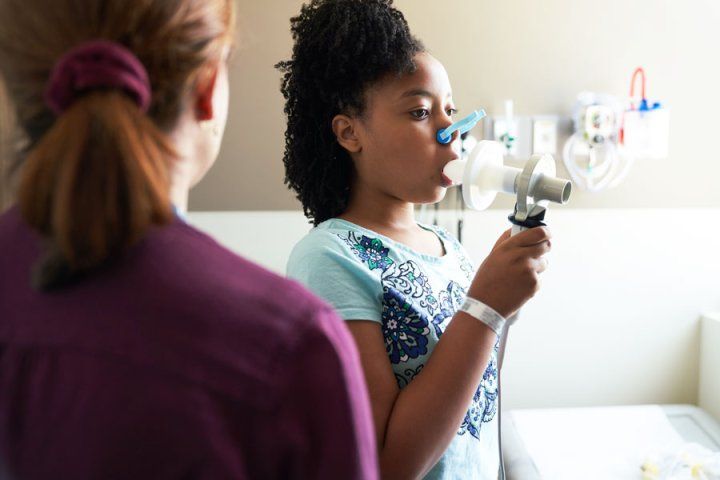 Follow-up care after an asthma-related visit to the emergency department (ED) may help prevent future ED visits for children, a new study led by UC San Francisco researchers found.
Follow-up care after an asthma-related visit to the emergency department (ED) may help prevent future ED visits for children, a new study led by UC San Francisco researchers found.
Past studies on the relationship between asthma-related ED visits and follow-up found either no protective effect, or that follow-up was paradoxically associated with increased ED use, possibly because sicker patients in the ED were more likely to get follow-up but were also more likely to have severe asthma and subsequent visits, the researchers said.
If follow-up were in place for all visits, around 72,000 subsequent ED revisits could be prevented and millions of dollars could be saved, the researchers said.
In the current study, patients 3 to 21 years old who received follow-up care within two weeks of an asthma-related ED visit were 12% less likely to return to the ED for asthma within 60 days, and 13% less likely to revisit for asthma in the next year.
The paper was published online by Academic Pediatrics.
Only 23% of patients in the current study received follow-up care, although clinical practice guidelines recommend all patients be referred for follow-up within a month after an ED visit for asthma. The patients who received it were younger and more likely to have commercial insurance, complex chronic conditions and known asthma from prior ED visits.
“An urgent ED visit for asthma may suggest the child needs daily asthma medications to better control their asthma, or that they are having difficulty avoiding asthma triggers or recognizing symptoms,” said Naomi Bardach, MD, a UCSF pediatrics professor and lead author of the study. “Follow-up visits are an opportunity to educate the family and child on managing their asthma, prescribe new medications if needed, and ensure success in getting prescribed medications.”
More than 500,000 Pediatric ED Visits for Asthma Each Year
Asthma is the most common pediatric chronic disease, affecting 9% of school-aged children, and contributing to over 500,000 ED visits for children annually, according to the CDC.
The researchers used claims data from California, Massachusetts and Vermont to identify asthma-related ED visits. Patients were most likely to follow up with a pediatrician (71%) followed by a family medicine physician (17%), a general internist (9%) and a pulmonologist or immunologist (3%).
About 5.7% of those with follow-up had a return asthma-related ED visit within 60 days, compared to 6.4% who didn’t have follow-up (p<0.001). At 365 days, 25% of those with follow-up had a return ED visit compared to 28.3% who had no follow-up.
The current study findings of a protective effect from follow-up may reflect changes in primary care management of asthma, which has led to more effective asthma control. Such changes likely include a stepwise approach to using daily medications and better provider adherence to recommendations to prescribe daily inhaler medication for patients with persistent asthma, the authors wrote.
“Follow-up care is a team effort between ED clinicians, primary care clinicians, and families. The protective effect of the follow visit at 14 days – even a year out – suggests that part of what is helpful is having an existing and trusting relationship with a clinician,” Bardach said. “Primary care and ED clinicians can support families by helping establish and maintain primary care connections.”
Authors: UCSF co-authors are Charles McCulloch, PhD, from the Department of Epidemiology and Biostatistics, and Robert Thombley from the Department of Medicine. Additional authors and affiliations can be found in the paper.
Image by Steve Babuljak
